44 allergens required on food labels
› common-allergens › tree-nutTree Nut - FoodAllergy.org Tree nuts are one of the eight major allergens that must be listed in plain language on packaged foods sold in the U.S., as required by federal law, either within the ingredient list or in a separate “Contains” statement on the package. For tree nuts, the specific variety must also be identified on the package. inspection.canada.ca › food-labels › labellingList of ingredients and allergens on food labels - Canadian ... It is not required to declare food allergens or gluten that is present in a prepackaged product as a result of cross-contamination [B.01.010.1(3), FDR]. The Food and Drug Regulations (FDR) specify the manner in which ingredients and components must be declared, including grouping sugars-based ingredients , common names , and declaring food ...
Food Allergen Labelling - Canada.ca The Food and Drug Regulations require that most prepackaged foods carry a label and that the ingredients appear on labels in decreasing order of proportion. However, some ingredients used in food products which were previously exempt from declaration in the list of ingredients, (e.g., components of margarine, seasoning and flour) will now be required to appear on food labels also.

Allergens required on food labels
Allergen labelling - Food Standards In February 2021, new plain English allergen labelling requirements were introduced for how certain foods known to be common allergens are declared. These changes will mean food allergen information is clearer and easier to find on food labels. Food businesses have three years to update their labels to meet the new requirements. Guidance for Industry: Questions and Answers Regarding Food Allergens ... As originally enacted in 1938, section 403(i) of the Federal Food, Drug, and Cosmetic Act required that the label of a food that is fabricated from two or more ingredients declare each ingredient ... How To Read Food Labels For Allergens | Allergy Force In 2006, FALCPA (The Food Allergen Labeling and Consumer Protection Act of 2004) became effective and required all food labels in the U.S. to list ingredients that may cause allergic reactions. FALCPA is regulated by the FDA. While individual ingredients can obtain exemptions, the FDA cannot simply add a new major food allergen (MFA) to the ...
Allergens required on food labels. › business-guidance › allergen-labellingAllergen labelling for food manufacturers Free from food are special ranges of foods made without allergens. If a label states that your product is 'free-from milk' or, 'peanut free', it has to be based on specific and rigorous controls. These controls need to ensure that the final product is completely free of the particular allergen. How to Make Sense of Allergy Warning Labels on Foods Although over a hundred different foods are known to cause allergies, these eight account for over 90% of cases of food allergies: 1. Cow's milk 2. Eggs 3. Fish 4. Shellfish 5. Tree nuts 6. Peanuts 7. Wheat 8. Soybeans All foods that the FDA regulates are required to identify these eight major food allergens. EOF Labels - Texas Cottage Food Law A: You are not required to, but you can if you like. The rule only requires you to list any of the major allergens present in the food. Q6: Can I add information to my label, such as a statement that the food may have come into contact with other allergens? A: Yes.
The Big 8 Food Allergens - The Food Institute May 09, 2020 · [Editor’s Note 1/13/2022: Please see our updated list that includes sesame here: The Big 9 Food Allergens] More than 170 foods have been reported to cause allergic reactions, but eight major food allergens, also known as the Big 8, are responsible for most of the serious food allergy reactions in the U.S., according to Food Allergy Research & Education. Sulphites - Sources of sulphites - Food Allergy Canada Sulphites do not cause true allergic reactions, and are generally grouped with the priority food allergens because sulphite-sensitive individuals may react to sulphites with allergy-like symptoms. An allergic reaction usually happens within minutes after being exposed to an allergen, but sometimes it can take place several hours after exposure. Food Allergies | FDA - U.S. Food and Drug Administration Jun 23, 2022 · People with food allergies should read labels and avoid the foods they are allergic to. The law requires that food labels identify the food source of all major food allergens used to make the food. › food › food-labeling-nutritionFood Allergies | FDA - U.S. Food and Drug Administration Jun 23, 2022 · People with food allergies should read labels and avoid the foods they are allergic to. The law requires that food labels identify the food source of all major food allergens used to make the food.
Allergen guidance for food businesses | Food Standards Agency 14 allergens. Food businesses need to tell customers if any food they provide contain any of the listed allergens as an ingredient. Consumers may be allergic or have intolerance to other ingredients, but only the 14 allergens are required to be declared as allergens by food law. ... included on ingredients labels and ingredients should be kept ... Allergen Labeling Requirements — FDA Reader Packaged foods for sale in the US which were labeled after January 1st, 2006 must have an allergen statement. This includes single-ingredient packaged foods (i.e. canned tuna) Fresh fruits and vegetables do not require an allergen statement. › food › food-allergensgluten-freeFood Allergen Labeling and Consumer Protection Act of 2004 Mar 07, 2022 · (b) Effect on Other Authority.--The amendments made by this section that require a label or labeling for major food allergens do not alter the authority of the Secretary of Health and Human ... foodinstitute.com › focus › big-8-allergensThe Big 8 Food Allergens - The Food Institute May 09, 2020 · [Editor’s Note 1/13/2022: Please see our updated list that includes sesame here: The Big 9 Food Allergens] More than 170 foods have been reported to cause allergic reactions, but eight major food allergens, also known as the Big 8, are responsible for most of the serious food allergy reactions in the U.S., according to Food Allergy Research & Education.
TTBGov - Allergen Labeling Under the interim rule, producers, bottlers, and importers may declare the presence of major food allergens in their products, but are not required to do so. However, if an industry member chooses to undertake any allergen labeling, the label must comply with the labeling standards specified in the interim rule. Last reviewed/updated 12/10/2010.
› regulatory-information › search-fdaGuidance for Industry: Questions and Answers Regarding Food ... For questions regarding this document, contact Carol D'lima at the Center for Food Safety and Applied Nutrition (CFSAN) at 301-436-2371 (Updated phone: 240-402-1697) or Carol.Dlima@fda.hhs.gov ...
Must allergens be declared on labels? - USDA All food products containing two or more ingredients are required by federal regulations to bear an ingredients statement listing all ingredients by common or usual name in descending order of predominance. ... Related Articles. Does the Food Allergens Labeling and Consumer Protection apply to meat, poultry, and egg products under Food Safety ...
Food Labels: Read It Before You Eat It! - American Academy of Allergy ... Ingredients of these most common eight allergens must be labeled with clearly recognized English names of the food source as listed above. The "contains" statement is "voluntary", but if used, must include ALL of the allergenic ingredients from the list of eight allergenic sources as described in item 14 of the 2006 guidance document.
Food Allergies | Food Safety and Inspection Service A food allergy is a potentially serious response to consuming certain foods or food additives. For those who are sensitive, a reaction can occur within minutes or hours, and symptoms can range from mild to life threatening. The eight leading causes of food allergies are milk, eggs, fish, shellfish, tree nuts, peanuts, wheat, and soybeans.
Food Allergen Labeling Law Requirements and Exceptions - Verywell Health Tree nuts (e.g., pecans and almonds) Peanuts Wheat, and Soybeans According to the FDA, these are the allergens that cause the most problems in the U.S. Foods that contain these allergens need to list them in the ingredients label on the package. In addition, manufacturers must use use the "common or usual name" of the allergen.
Food Allergen Labeling and Consumer Protection Act of 2004 Mar 07, 2022 · (b) Effect on Other Authority.--The amendments made by this section that require a label or labeling for major food allergens do not alter the authority of the Secretary of Health and Human ...
How to Read a Food Label - FoodAllergy.org How to Read a Food Label - FoodAllergy.org In the ingredient list, using the allergen's common name. Using the word "Contains" followed by the name of the major food allergen—for example, "Contains milk, wheat." In the ingredient list in parentheses, when the ingredient is a less common form of the allergen—for example, "albumin (egg)."
List of ingredients and allergens on food labels - Canadian Food ... It is not required to declare food allergens or gluten that is present in a prepackaged product as a result of cross-contamination [B.01.010.1(3), FDR]. The Food and Drug Regulations (FDR) specify the manner in which ingredients and components must be declared, including grouping sugars-based ingredients , common names , and declaring food ...
Allergen labelling for food manufacturers - Food Standards … Free from food are special ranges of foods made without allergens. If a label states that your product is 'free-from milk' or, 'peanut free', it has to be based on specific and rigorous controls. These controls need to ensure that the final product is completely free of the particular allergen.
Understanding the FDA Food Allergen Labeling Requirements - enKo Products Are We Required to List Allergens on Our Food Labels? Yes, manufacturers need to declare the presence of allergens in their product if it has any. It is required by law under the Food Allergen Labeling and Consumer Protection Act, which is simply known as "FALCPA." Food allergies occur when some types of food trigger an immune reaction.
Allergen guidance for food businesses | Food Standards Agency 14 allergens. Food businesses need to tell customers if any food they provide contain any of the listed allergens as an ingredient. Consumers may be allergic or have intolerance to other ingredients, but only the 14 allergens are required to be declared as allergens by food law.
Tree Nut - FoodAllergy.org Tree nuts are one of the eight major allergens that must be listed in plain language on packaged foods sold in the U.S., as required by federal law, either within the ingredient list or in a separate “Contains” statement on the package. For tree nuts, the specific variety must also be …
How To Read Food Labels For Allergens | Allergy Force In 2006, FALCPA (The Food Allergen Labeling and Consumer Protection Act of 2004) became effective and required all food labels in the U.S. to list ingredients that may cause allergic reactions. FALCPA is regulated by the FDA. While individual ingredients can obtain exemptions, the FDA cannot simply add a new major food allergen (MFA) to the ...
Guidance for Industry: Questions and Answers Regarding Food Allergens ... As originally enacted in 1938, section 403(i) of the Federal Food, Drug, and Cosmetic Act required that the label of a food that is fabricated from two or more ingredients declare each ingredient ...
Allergen labelling - Food Standards In February 2021, new plain English allergen labelling requirements were introduced for how certain foods known to be common allergens are declared. These changes will mean food allergen information is clearer and easier to find on food labels. Food businesses have three years to update their labels to meet the new requirements.
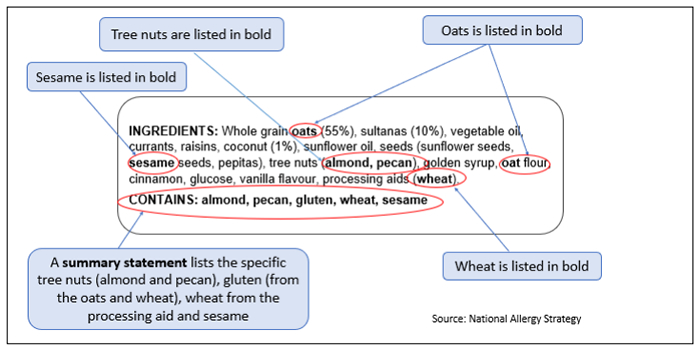

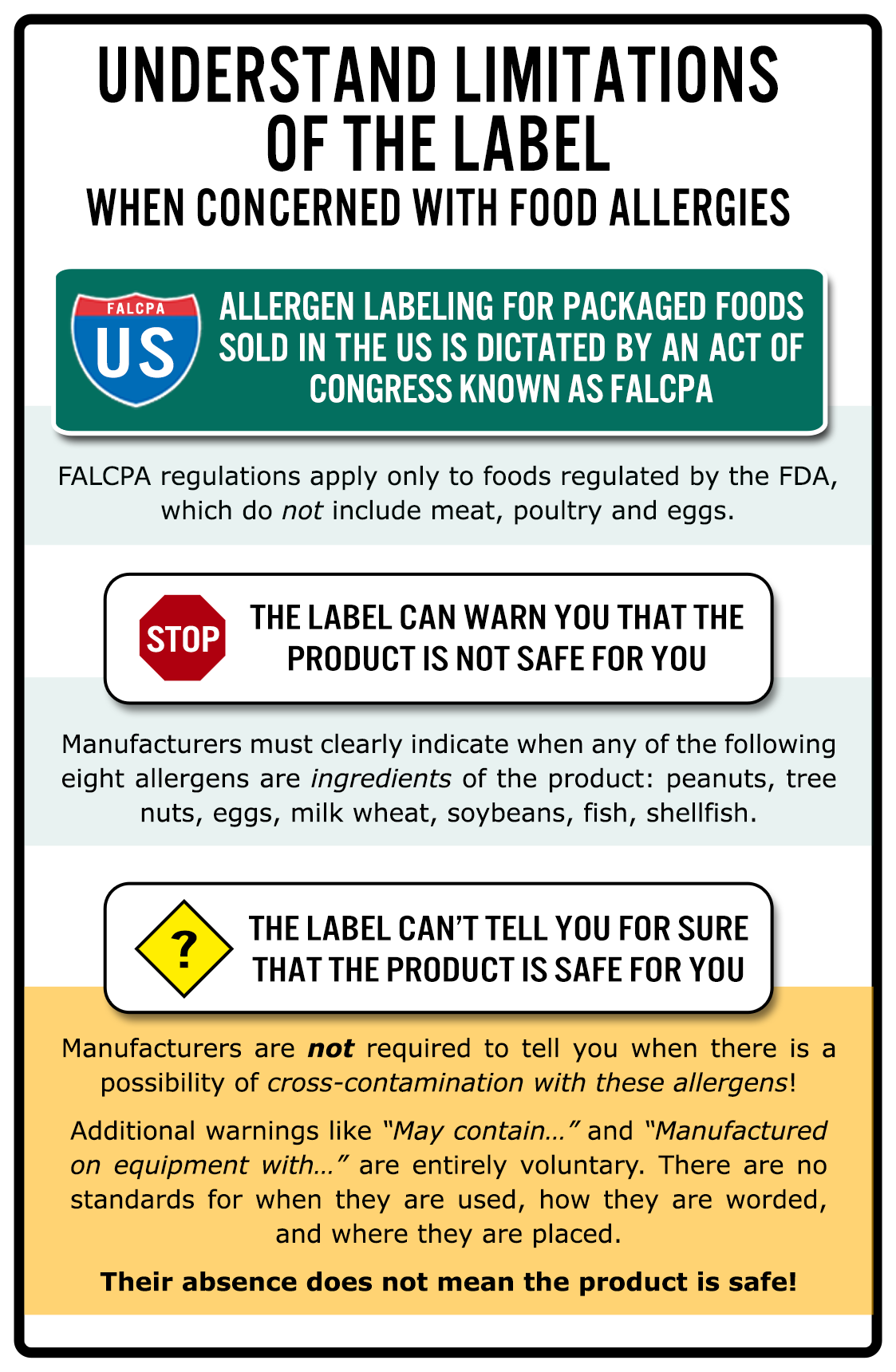


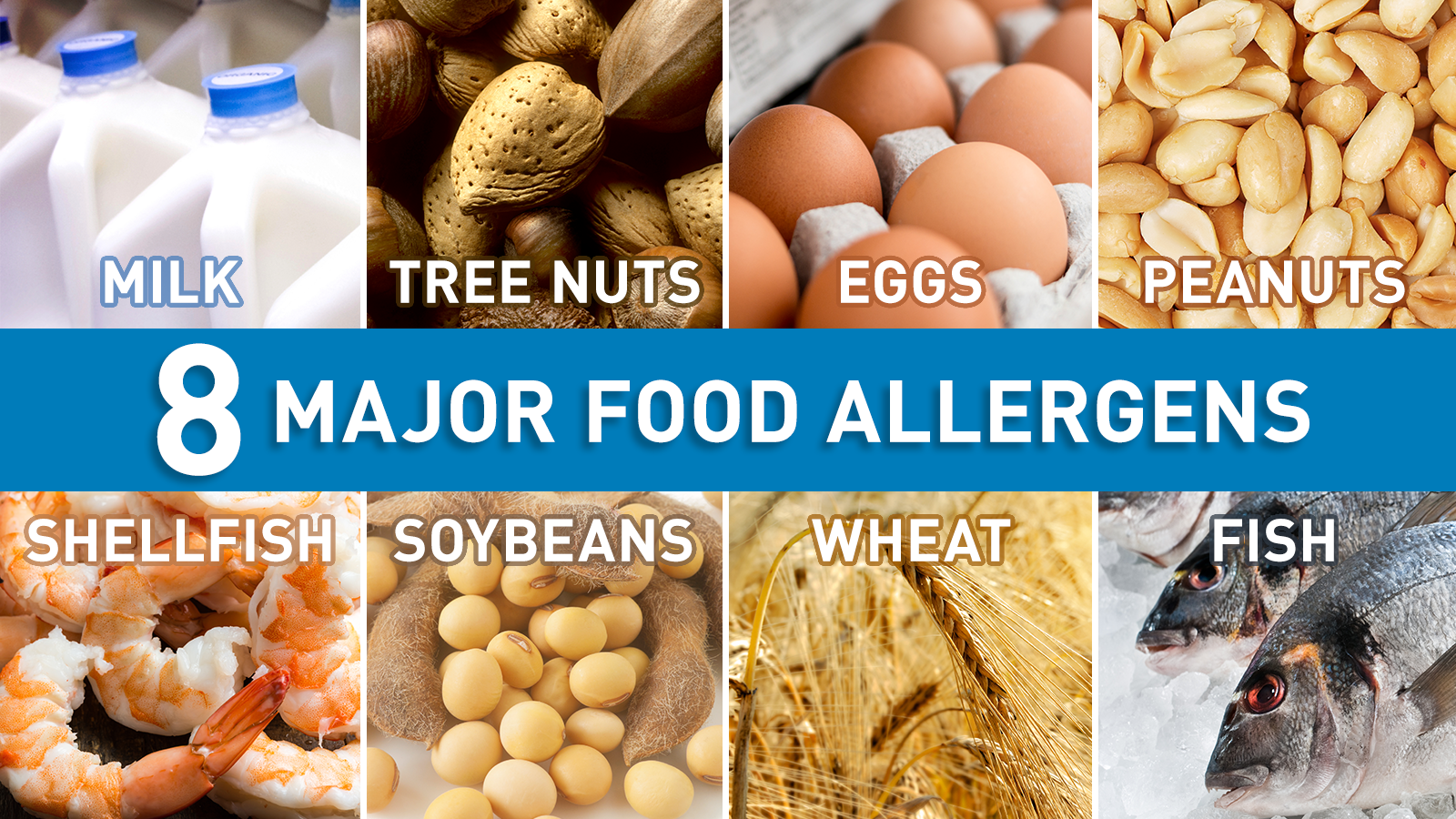

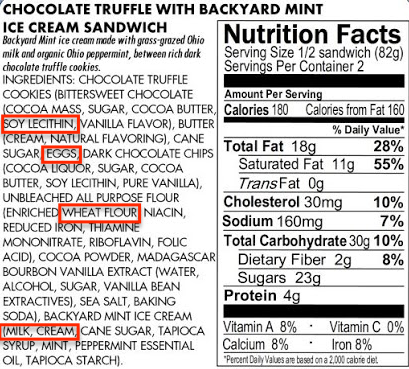
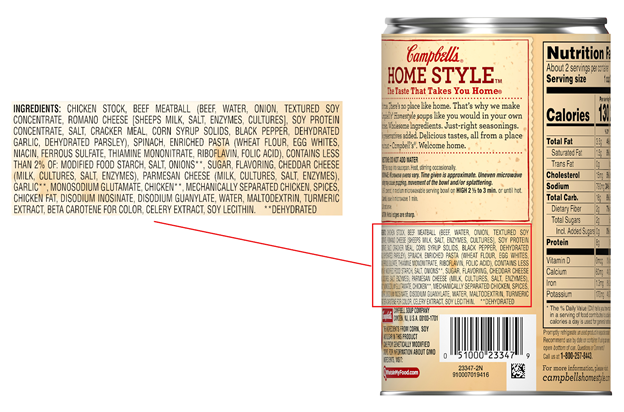

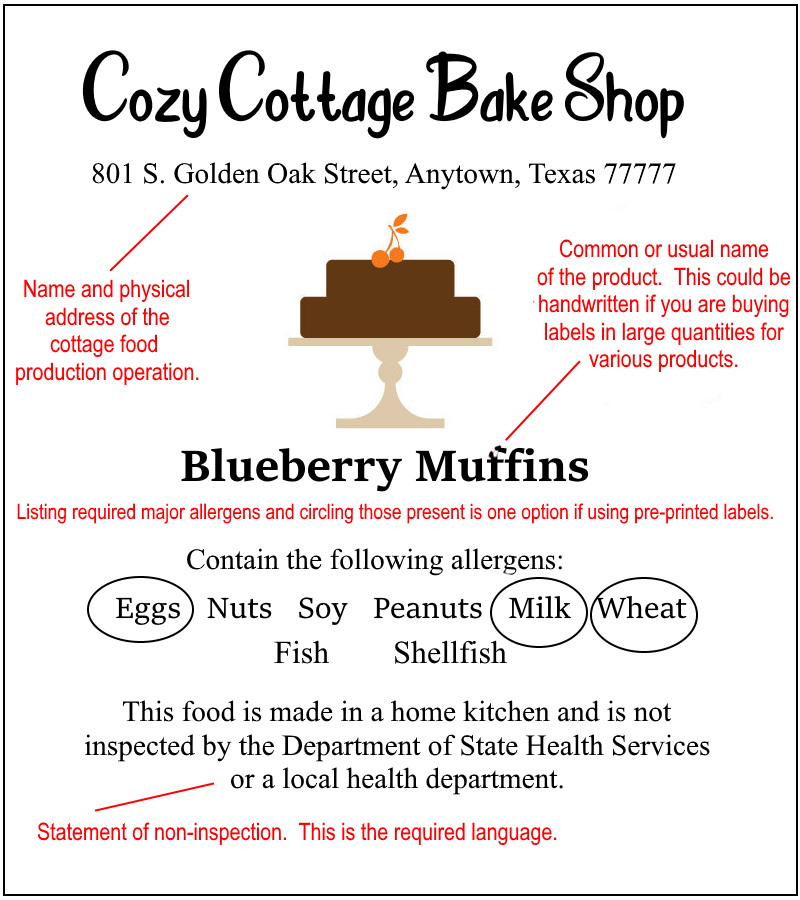



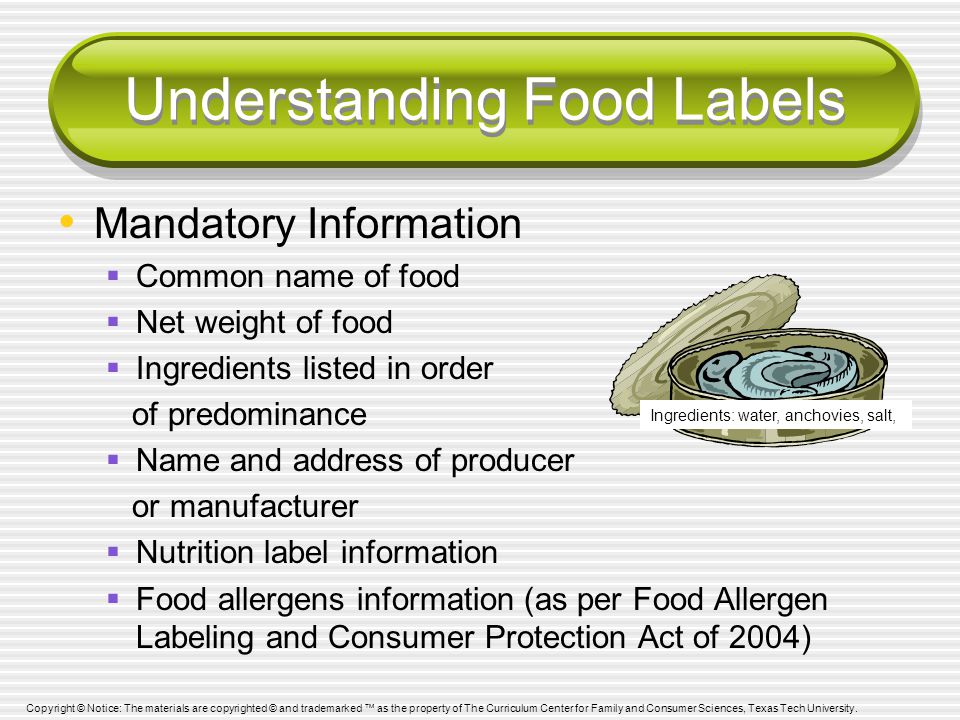




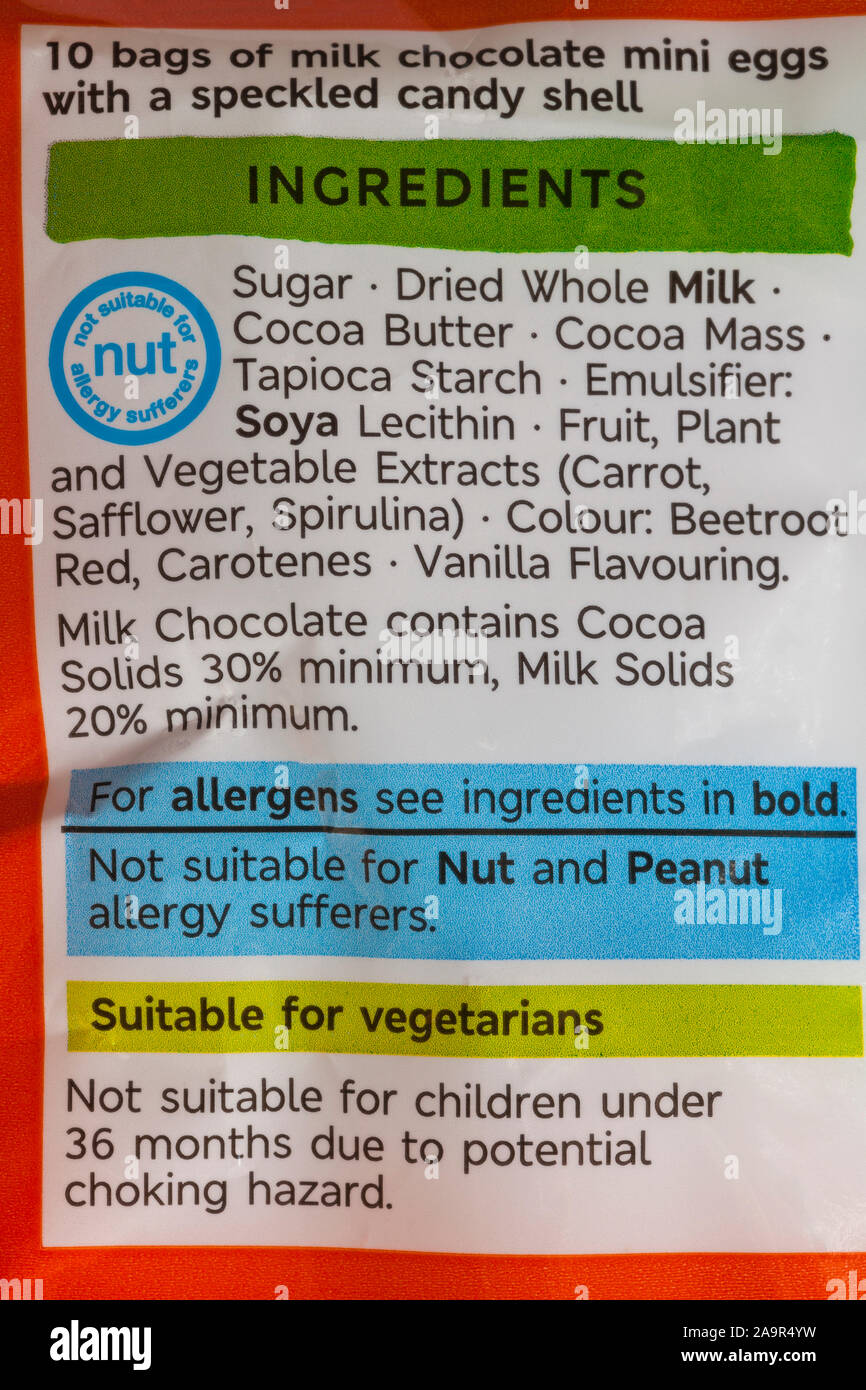



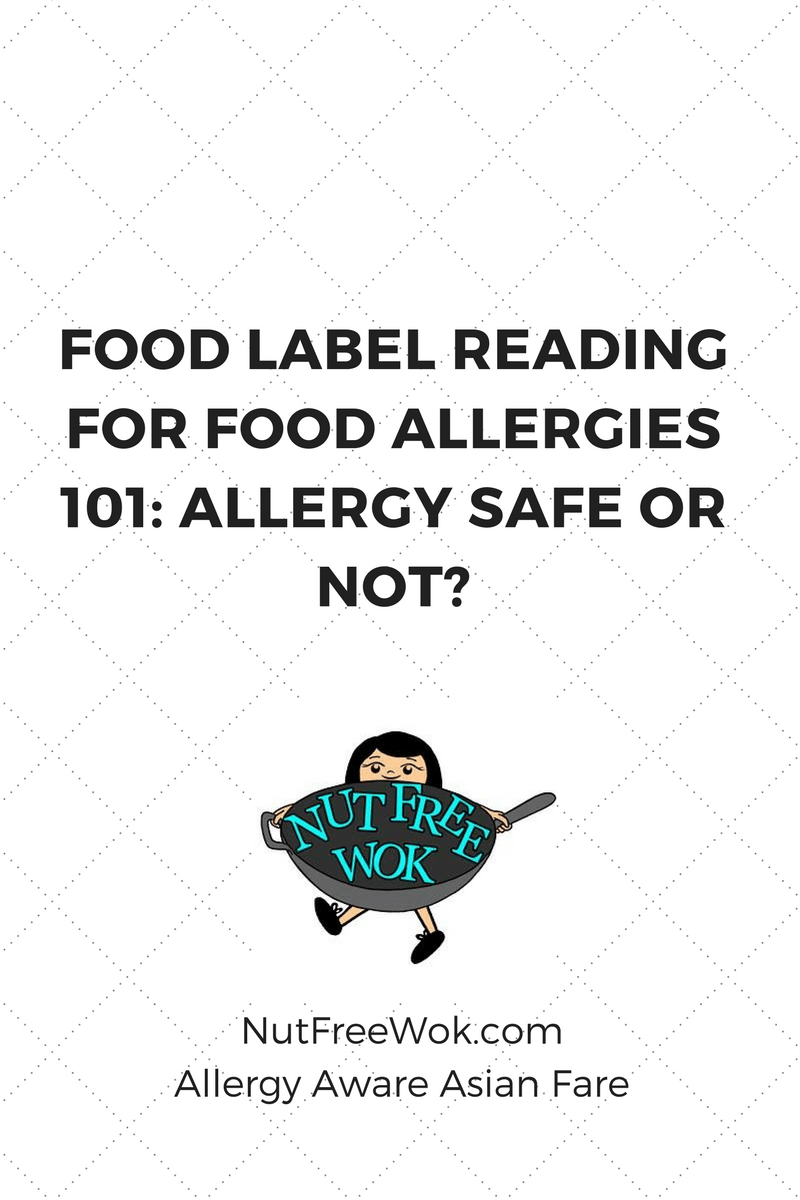
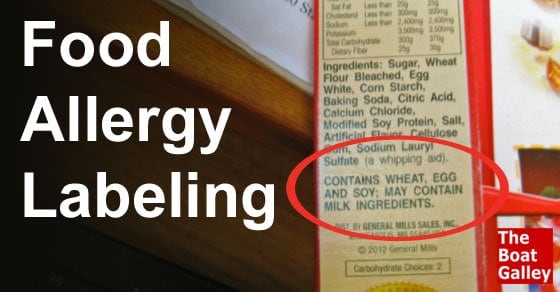
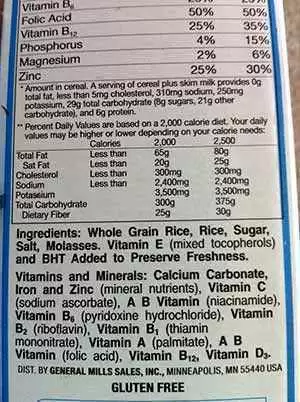






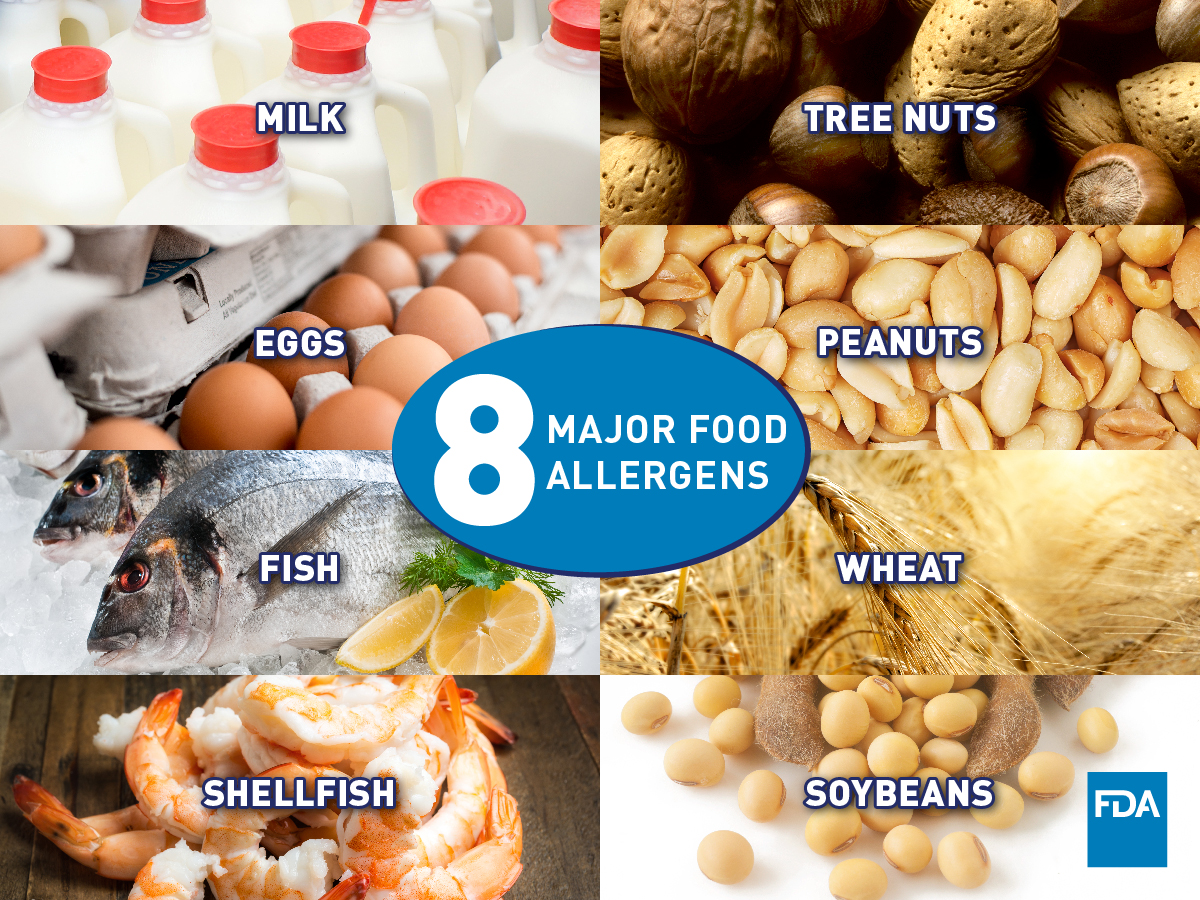



/GettyImages-98904622-5671b69a5f9b586a9e197e08.jpg)





Post a Comment for "44 allergens required on food labels"